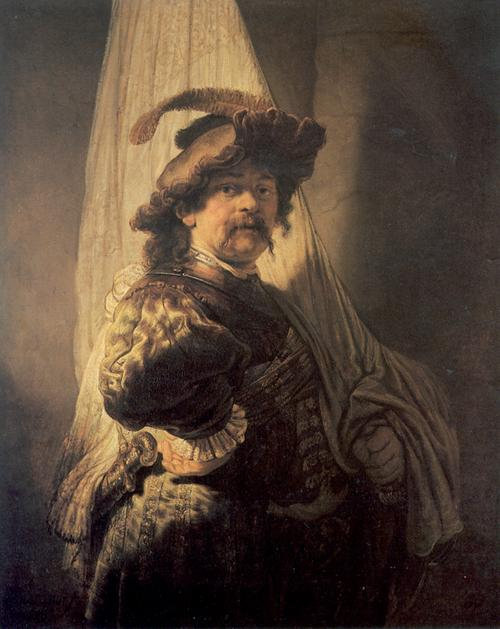Dutch State Moves to Acquire Rembrandt Masterpiece from Rothschild Family
Rembrandt van Rijn (1606-1669), The Standard Bearer, 1636.
The Netherlands allocates nearly $200 million to acquire an important Rembrandt self-portrait
The Dutch State announced on Wednesday its intention to purchase Rembrandt's The Standard Bearer (1636) for the national collection, with the support of the Rembrandt Association and the Rijksmuseum Fund. For centuries, the masterpiece has been owned by private collectors, including England’s King George IV and the Rothschild family.
The Standard Bearer has remained in the collection of a French branch of the Rothschild family since 1844, and France declared the painting a national treasure, blocking its export license in 2019 so that the Louvre could attempt to purchase it within 30 months. Earlier this week, the French state waived its right to buy it, thus allowing a sale on the international market, according to reports.
Other serious buyers could be in the running, possibly up to ten others, Rijksmuseum director Taco Dibbits said, adding that the museum will "go to extremes" to acquire it for the Netherlands.
Among Rembrandt's masterpieces, The Standard Bearer is inextricably linked to the history of the Netherlands. Standard-bearers were positioned in the front line in battle in the Eighty Years' War, the War of Independence which led to the birth of the Netherlands in 1648. In this large self-portrait, Rembrandt paints himself looking rebellious and full of bravado. It was this artistic breakthrough that would lead to The Night Watch.
If the acquisition is successful, The Standard Bearer will tour the Netherlands and go on public display in each of the provinces. It will eventually be given a place in the Rijksmuseum’s Gallery of Honour.
"A purchase like this matters for now and for generations to come. The Rembrandt Association has been helping to realize dream purchases for 138 years. This will be a pinnacle of its existence, with the highest contribution ever pledged," said Fusien Bijl de Vroe, the director of the Rembrandt Association.
Standard-bearers had a dangerous task in the militia of the 17th century: on the battlefield they went ahead of the troops in shiny clothing and brandishing flags. The militia had an essential role in the Eighty Years' War, the revolt against Spanish rule. At the same time, The Standard Bearer shows Rembrandt's ambition to paint a group portrait for the Amsterdam militia, at the time the most valued commission a painter could be awarded. Rembrandt succeeded six years later when he was commissioned to paint The Night Watch.
Rembrandt made about 340 paintings. Most of these are in museums and private collections. There are 44 paintings by Rembrandt in the Netherlands, 22 of which are in the Rijksmuseum.
Few paintings by Rembrandt appear on the auction market, with the highest price ever paid at auction for his work set at 20.2 million pounds ($33.2 million) for a portrait at a Christie's London sale in 2009. The Standard Bearer is considered the most important of Rembrandt's oeuvre left in private hands, and one of his finest paintings.
"The quality and the fact that this painting marks Rembrandt's artistic breakthrough makes it an unparalleled work by the master," said Dibbits.

/https%3A%2F%2Fprofilepics.canalblog.com%2Fprofilepics%2F1%2F0%2F100183.jpg)
/https%3A%2F%2Fstorage.canalblog.com%2F03%2F02%2F119589%2F96711876_o.jpg)
/https%3A%2F%2Fstorage.canalblog.com%2F11%2F31%2F119589%2F94773502_o.jpg)
/https%3A%2F%2Fstorage.canalblog.com%2F20%2F83%2F119589%2F94772815_o.jpg)
/https%3A%2F%2Fstorage.canalblog.com%2F26%2F72%2F119589%2F75604929_o.jpg)
/https%3A%2F%2Fstorage.canalblog.com%2F59%2F60%2F119589%2F26458628_o.jpg)



/image%2F1371349%2F20240321%2Fob_0f526c_rembrandt-arms-akimbo.jpg)
/http%3A%2F%2Fstorage.canalblog.com%2F89%2F40%2F119589%2F129653656_o.jpg)
/http%3A%2F%2Fstorage.canalblog.com%2F77%2F49%2F119589%2F129539724_o.jpg)
/http%3A%2F%2Fstorage.canalblog.com%2F08%2F62%2F119589%2F128571574_o.jpg)